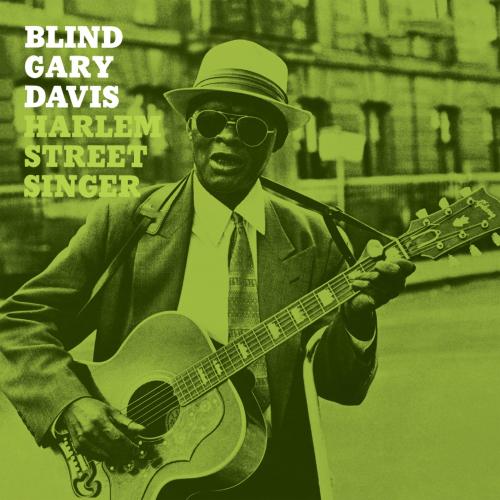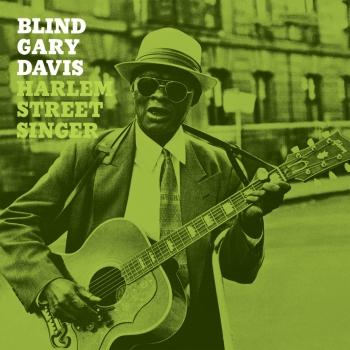
Harlem Street Singer (Remastered 2024) Reverend Gary Davis
Album Info
Album Veröffentlichung:
1963
HRA-Veröffentlichung:
25.09.2024
Das Album enthält Albumcover
Entschuldigen Sie bitte!
Sehr geehrter HIGHRESAUDIO Besucher,
leider kann das Album zurzeit aufgrund von Länder- und Lizenzbeschränkungen nicht gekauft werden oder uns liegt der offizielle Veröffentlichungstermin für Ihr Land noch nicht vor. Wir aktualisieren unsere Veröffentlichungstermine ein- bis zweimal die Woche. Bitte schauen Sie ab und zu mal wieder rein.
Wir empfehlen Ihnen das Album auf Ihre Merkliste zu setzen.
Wir bedanken uns für Ihr Verständnis und Ihre Geduld.
Ihr, HIGHRESAUDIO
- 1 Samson And Delilah (Remastered 2024) 04:04
- 2 Let Us Get Together Right Down Here (Remastered 2024) 03:10
- 3 I Belong To The Band (Remastered 2024) 02:55
- 4 Pure Religion (Remastered 2024) 02:58
- 5 Great Change Since I Been Born (Remastered 2024) 04:03
- 6 Death Don't Have No Mercy (Remastered 2024) 04:43
- 7 Twelve Gates To The City (Remastered 2024) 03:09
- 8 Goin' To Sit Down On The Banks Of The River (Remastered 2024) 02:56
- 9 Tryin' To Get Home (Remastered 2024) 03:47
- 10 Lo, I Be With You Always (Remastered 2024) 04:18
- 11 I Am The Light Of This World (Remastered 2024) 03:35
- 12 Lord, I Feel Just Like Goin' On (Remastered 2024) 03:30
Info zu Harlem Street Singer (Remastered 2024)
Der legendäre Blind Gary Davis, auch bekannt als Reverend Gary Davis, war ein mächtiger Gospel- und Folk-Blues-Sänger und meisterhafter Akustikgitarrist. Nur mit Daumen und Zeigefinger produzierte er einen vielstimmigen Stil und sein virtuoses Fingerpicking war ein wichtiger Einfluss auf viele andere Musiker, wie Blind Boy Fuller und Brownie McGhee.
In den 1950er und 1960er Jahren unterrichtete Davis und trat in New York City auf und wurde ein Mentor für Folk-Legenden wie Ramblin‘ Jack Elliott, Dave Van Ronk und Bob Dylan, um nur einige zu nennen. Harlem Street Singer ist eines seiner kultigsten Alben.
„Harlem Street Singer" ist das 1960 erschienene Album von Blind Gary Davis, das ursprünglich bei Prestige Records' Bluesville Imprint veröffentlicht wurde. Das Album enthält eine Kombination aus Titeln aus Davis' Feder, darunter „Death Don't Have No Mercy“, und Standards wie „Samson and Delilah“. All Music erklärte, das Album sei „ein Muss für Fans von Country-Blues und Gospel“.
"Bei einer dreistündigen Aufnahmesession am 24. August 1960 hat Gary Davis zwölf seiner leidenschaftlichsten Spirituals für Harlem Street Singer aufgenommen. Die Session begann mit einer Version von Blind Willie Johnsons "If I Had My Way I'd Tear That Building Down", die hier in "Samson and Delilah" umbenannt wurde. Davis ist in Hochform. Sein Gesang ist so ausdrucksstark wie der von Ray Charles und ähnelt in seiner Fülle dem von Richie Havens. Harlem Street Singer zeichnet sich auch durch sein inspiriertes Country-Blues-Fingerpicking aus. Die Auswahl ist von vielen Stimmungen geprägt, vom sanften "I Belong to the Band" bis zum traurigen "Death Don't Have No Mercy", gefolgt vom freudigen Geschrei von "Goin' to Sit Down on the Banks of the River". Insgesamt ist die Sammlung den Kauf wert und sollte für Fans von Country-Blues oder Gospel als unverzichtbares Hörerlebnis gelten." (Matt Fink, AMG)
Blind Gary Davis, Gitarre, Gesang
Digitally remastered
Zur Info: wir bieten dieses Album in der nativen Abtastrate von 96 kHz, 24-Bit an. Die uns zur Verfügung gestellte 192 kHz-Version wurde hochgerechnet und bietet keinen hörbaren Mehrwert!
Reverend (Blind) Gary Davis
was born in Laurens County, S.C., south of Spartanburg, in the Piedmont section of the state. His parents were John and Evelina Davis, who had eight children, six of whom died as babies. A girlfriend killed Davis’ only surviving brother in 1930. Davis claimed to have been born partially blind by chemicals put in his eyes when he was a few weeks old. His grandmother raised Davis, raised chickens, and taught him music.
He began playing the harmonica, and his grandmother helped him make a guitar from a pie pan and a stick. Davis practiced endlessly after his mother gave him a real guitar and learned to play the banjo. His first musical exposure was the spirituals sung in church, square-dance music and popular marches. By the time Davis was ten, he was singing at the Center Raven Baptist Church in Gray Court, South Carolina, playing guitar, banjo, and harmonica for segregated country dances, house parties, and picnics.
By 1940, Davis had found his way to New York City, where he was ordained minister of Missionary Baptist Connection Church. Here, his recording career began in earnest. Starting in the late 1950s, as folk music became popular on campuses and in coffee houses, Davis was "discovered" by a largely educated, middle-class audience. They were at first more interested in his hot guitar licks and blues-holler singing style than in his specific religious message. The Reverend responded to this more secular audience with temporal songs like "Cocaine" and "Baby Let Me Follow You Down" yet also performed gospel compositions like "Samson and Delilah" and "Death Don't Have No Mercy").
Davis always considered his work to be essentially religious. When students traveled uptown to learn from him, Reverend Davis would extend his lesson with preaching, food, and companionship. He became an important mentor to the folk music revival and eventually performed at many festivals, including the Newport Folk Festival and Philadelphia Folk Festival.
By the 1960s, Davis was represented by Folklore Productions, and his songs were published as Chandos Music (ASCAP). They administer the Reverend Gary Davis's Estate. The estate's main beneficiary, the widow Annie Davis, lived for many years in the Reverend’s brick house in Queens, New York.
Davis was an icon of the mid-twentieth-century folk-music revival as one of the most innovative and influential blues guitarists. His legacy as a teacher and performer can be heard in the work of Bob Dylan, the Grateful Dead, and many more. The Reverend Gary Davis died in Hammonton, New Jersey, on May 5, 1972.
Dieses Album enthält kein Booklet










